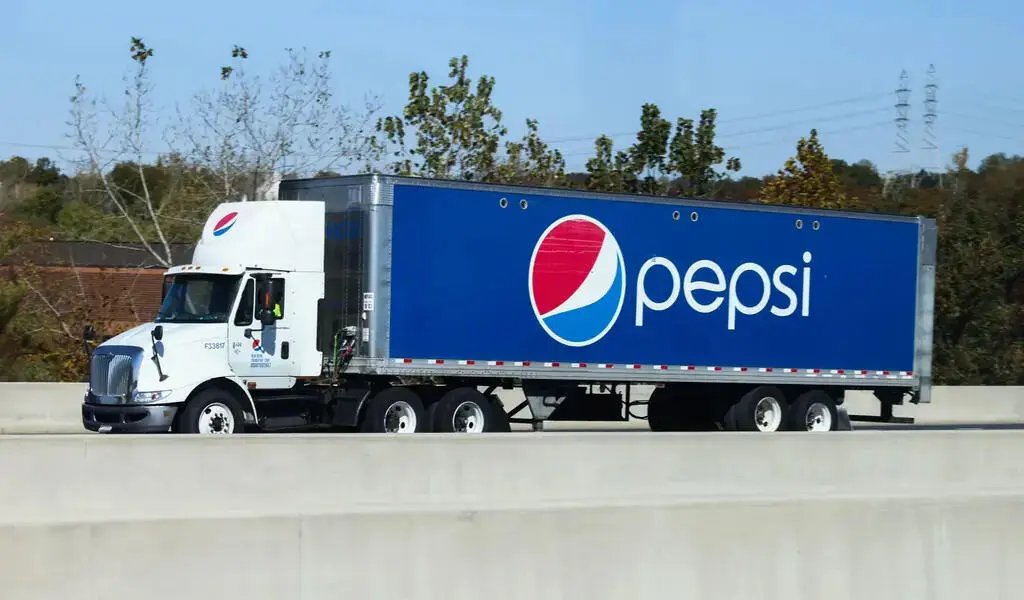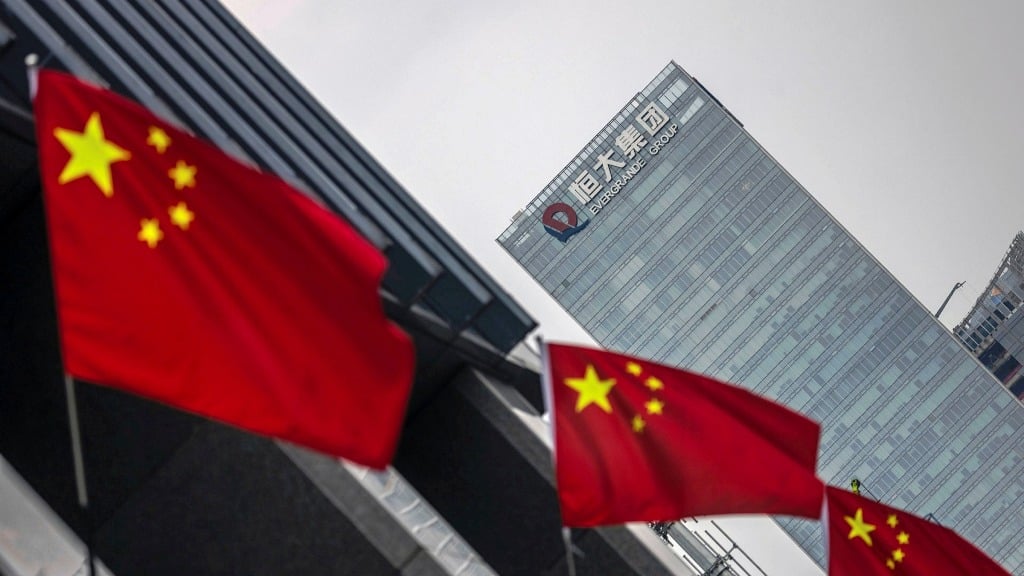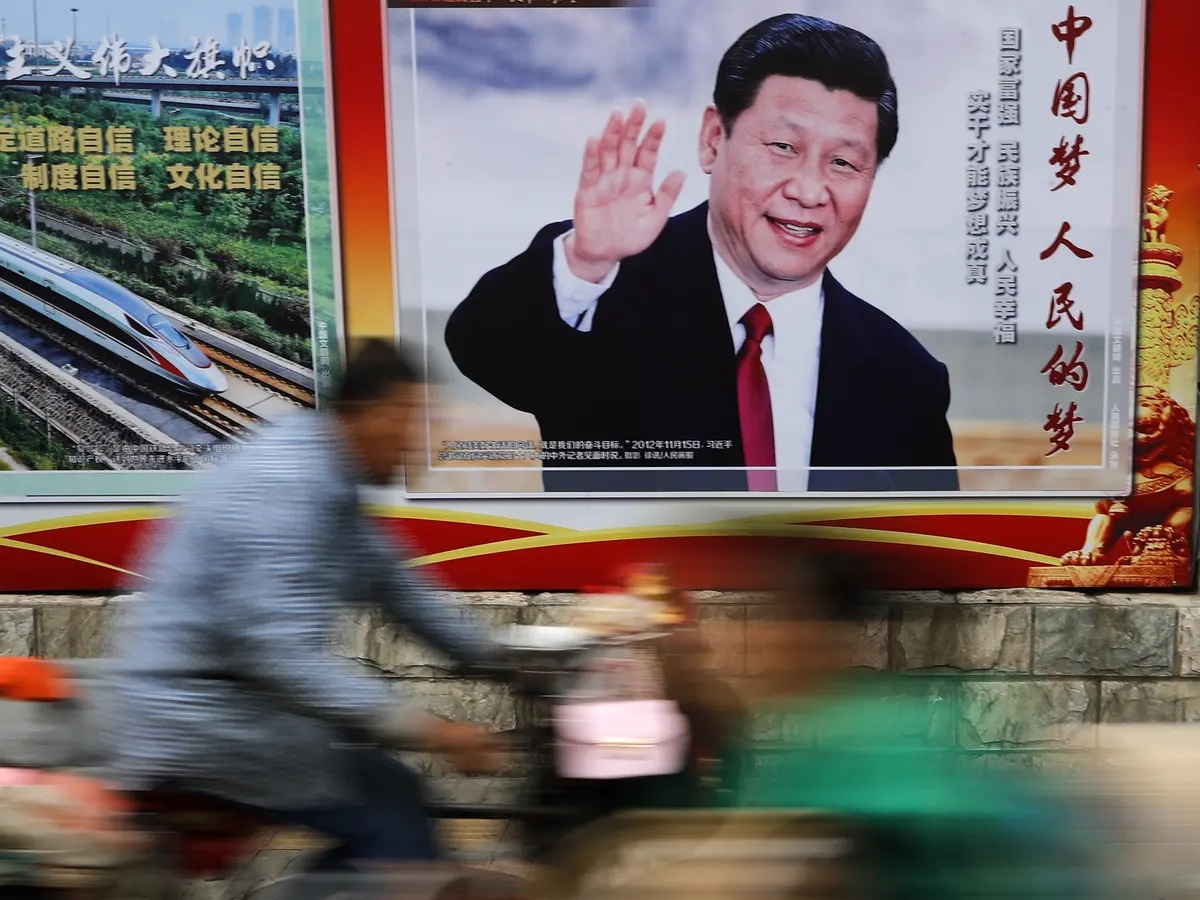Business
China’s Evergrande Files for Bankruptcy Protection as Economy Implodes

As China’s economic crisis worsens, China’s property giant Evergrande has filed for bankruptcy protection in the United States. It will help the deeply indebted corporation to safeguard its assets in the United States while it negotiates a multibillion-dollar agreement with creditors.
Evergrande declared bankruptcy in 2021, sending shockwaves through global financial markets. The decision comes as troubles in China’s real estate industry add to the world’s second largest economy’s woes.
On Thursday, China Evergrande Group filed for Chapter 15 bankruptcy protection in a New York court. Chapter 15 bankruptcy preserves a foreign company’s assets in the United States while it tries to restructure its debts, the BBC reports.
According to its website, the group’s real estate unit has over 1,300 projects in over 280 Chinese cities. It also owns an electric car manufacturer and a football club.
Evergrande has been attempting to renegotiate its debt repayment agreements with creditors after falling behind on payments. It was the world’s most indebted property developer, with debts believed to exceed more than $300 billion (£235 billion).
Evergrande shares have been off the market since last year.
Country Garden, another large Chinese property behemoth, warned last week that it could lose up to $7.6 billion in the first six months of the year. Some of China’s largest real estate corporations are struggling to raise funds to complete projects.
“The key to this issue is to complete unfinished projects because this will at least keep some of the financing flowing,” said Steven Cochrane of Moody’s Analytics, an economic research organisation.
He added that many properties are pre-sold, but if construction is halted, customers are unable to make mortgage payments, putting additional burden on developers’ finances.
Earlier this month, Beijing declared that China’s economy had entered deflation, citing a drop in consumer prices in July for the first time in more than two years.
Because of its slow growth, China is not seeing the increasing prices that have alarmed many other countries and spurred central bankers around the world to raise borrowing costs dramatically.
Imports and exports fell substantially this month as lower global demand jeopardised the world’s second-largest economy’s recovery chances.
Official numbers reveal that exports plummeted 14.5% year on year in July, while imports declined 12.4%.
China’s central bank unexpectedly slashed key interest rates for the second time in three months earlier this week in an effort to bolster the economy.
China facing economic crisis
China, the world’s second-largest economy, is having a difficult time. For a long time, the Asian behemoth has been under enormous strain, as seen by bad economic data and downgrades by global brokerages. The entire world is now feeling the effects of China’s economic collapse.
But why is the world concerned about the country’s downturn? Here’s everything you need to know.
For starters, China is a dominant global participant in almost every area, with the International Monetary Fund’s (IMF) 2017 World Economic Outlook estimating that the country will contribute more than 22% of world GDP.
Despite its image, China is a key bilateral trading partner for many countries and a large provider of goods, earning it the moniker of the world’s manufacturing hub.
Almost all of the world’s largest corporations, from Tesla to Apple, have their supply chains entrenched in China.
Simply said, China has the world’s largest manufacturing economy and is the world’s greatest exporter of goods. Furthermore, the country is the world’s greatest consumer of a variety of critical commodities, including metals.
It is worth noting that China consumes roughly half of the world’s metals.
As a result, a decline in China’s economic activity can significantly disrupt the global demand-supply balance, which is not a good development at a time when the world is just beginning to recover from an economic slowdown caused by a variety of factors including inflation, the Russia-Ukraine conflict, and extreme weather events.
There is no doubting that the Chinese economy is in trouble, and while Beijing has promised to expand the private sector and protect firms, its efforts appear to be falling short. The country’s July economic activity data offers a troubling image, with key measures like as retail sales, industrial output, and investment output falling short of expectations.
This has sparked fears of a deeper and longer-lasting slowdown in GDP.
Data on Chinese economic activity has been underperforming predictions since the beginning of the second quarter, causing major anxiety in global markets.
However, this is not the first time China’s economy has encountered difficulties. China experienced similar shocks during the 2008-09 global financial crisis and the 2015 capital outflow concern.
However, the Chinese economy emerged stronger on both occasions, with the government driving infrastructure spending and expanding property markets.
However, it appears that excessive infrastructure spending over the years has come back to haunt Beijing in the form of heavy debt, and the property bubble had already burst during the epidemic, beginning with the Evergrande disaster.
The cumulative impacts have posed major threats to the country’s financial viability, which has been exacerbated by the worldwide downturn caused by the pandemic.

Business
PepsiCo Reduces Revenue Projections As North American Snacks And Key International Markets Underperform.

(VOR News) – In the third quarter of this year, Pepsi’s net income was $2.93 billion, which is equivalent to $2.13 per share. This was attributed to the company.
This is in stark contrast to net income of $3.09 billion, which is equivalent to $2.24 per share, during the same period in the previous year. The company’s earnings per share were $2.31 when expenses were excluded.
Net sales decreased by 0.6%, totaling $23.32 billion. Organic sales increased by 1.3% during the quarter when the effects of acquisitions, divestitures, and currency changes are excluded.
Pepsi’s beverage sales fell this quarter.
The most recent report indicates that the beverage and food sectors of the organization experienced a 2% decline in volume. Consumers of all income levels are demonstrating a change in their purchasing habits, as indicated by CEOs’ statements from the previous quarter.
Pepsi’s entire volume was adversely affected by the lackluster demand they encountered in North America. An increasing number of Americans are becoming more frugal, reducing the number of snacks they ingest, and reducing the number of times they purchase at convenience stores.
Furthermore, Laguarta observed that the increase in sales was partially attributed to the election that occurred in Mexico during the month of June.
The most significant decrease in volume was experienced by Quaker Foods North America, which was 13%. In December, the company announced its initial recall in response to a potential salmonella infection.
Due to the probability of an illness, the recall was extended in January. Pepsi officially closed a plant that was implicated in the recalls in June, despite the fact that manufacturing had already been halted.
Jamie Caulfield, the Chief Financial Officer of Pepsi and Laguarta, has indicated that the recalls are beginning to have a lessening effect.
Frito-Lay experienced a 1.5% decline in volume in North America. The company has been striving to improve the value it offers to consumers and the accessibility of its snack line, which includes SunChips, Cheetos, and Stacy’s pita chips, in the retail establishments where it is sold.
Despite the fact that the category as a whole has slowed down in comparison to the results of previous years, the level of activity within the division is progressively increasing.
Pepsi executives issued a statement in which they stated that “Salty and savory snacks have underperformed year-to-date after outperforming packaged food categories in previous years.”
Pepsi will spend more on Doritos and Tostitos in the fall and winter before football season.
The company is currently promoting incentive packets for Tostitos and Ruffles, which contain twenty percent more chips than the standard package.
Pepsi is expanding its product line in order to more effectively target individuals who are health-conscious. The business announced its intention to acquire Siete Foods for a total of $1.2 billion approximately one week ago. The restaurant serves Mexican-American cuisine, which is typically modified to meet the dietary needs of a diverse clientele.
The beverage segment of Pepsi in North America experienced a three percent decrease in volume. Despite the fact that the demand for energy drinks, such as Pepsi’s Rockstar, has decreased as a result of consumers visiting convenience stores, the sales of well-known brands such as Gatorade and Pepsi have seen an increase throughout the quarter.
Laguarta expressed his opinion to the analysts during the company’s conference call, asserting, “I am of the opinion that it is a component of the economic cycle that we are currently experiencing, and that it will reverse itself in the future, once consumers feel better.”
Additionally, it has been noted that the food and beverage markets of South Asia, the Middle East, Latin America, and Africa have experienced a decline in sales volume. The company cut its forecast for organic revenue for the entire year on Tuesday due to the business’s second consecutive quarter of lower-than-anticipated sales.
The company’s performance during the quarter was adversely affected by the Quaker Foods North America recalls, the decrease in demand in the United States, and the interruptions that occurred in specific international markets, as per the statements made by Chief Executive Officer Ramon Laguarta.
Pepsi has revised its forecast for organic sales in 2024, shifting from a 4% growth rate to a low single-digit growth rate. The company reiterated its expectation that the core constant currency profitability per share will increase by a minimum of 8% in comparison to the previous year.
The company’s shares declined by less than one percent during premarket trading. The following discrepancies between the company’s report and the projections of Wall Street were identified by LSEG in a survey of analysts:
SOURCE: CNBC
SEE ALSO:
Old National Bank And Infosys Broaden Their Strategic Partnership.
Business
Old National Bank And Infosys Broaden Their Strategic Partnership.

(VOR News) – Old National Bank, a commercial bank with its headquarters in the Midwest, and Infosys, a firm that specializes in information technology, have recently entered into a strategic expansion of their link, which has been in place for the past four years.
This expansion is more likely to take place sooner rather than later, with the likelihood being higher.
For the purpose of making it possible for Old National Bank to make use of the services, solutions, and platforms that are offered by Infosys, the objective of this expansion is to make it possible for the bank to transform its operations and processes through the application of automation and GenAI, as well as to change significant business areas.
This lets the bank leverage Infosys’ services, solutions, and platforms.
Old National Bank Chairman and CEO Jim Ryan said, “At Old National, we are committed to creating exceptional experiences for both our customers and our fellow employees.”
This statement is applicable to Old National Bank. Infosys is carefully managing the business process innovations that it is putting us through, putting a strong emphasis on efficiency and value growth throughout the process to ensure that it is carried out efficiently.
This is a routine occurrence throughout the entire operation. Because of Infosys’ dedication to our development and success, we are incredibly appreciative of the assistance they have provided.
Old National has been receiving assistance from Infosys in the process of updating its digital environment since the year 2020, according to the aforementioned company.
Ever since that time, the company has been providing assistance. The provision of this assistance has been accomplished through the utilization of a model that is not only powerful but also capable of functioning on its own power.
Infosys currently ranks Old National thirty-first out of the top thirty US banks.
This ranking is based on the fact that Old National is the nation’s largest banking corporation.
It is estimated that the total value of the company’s assets is approximately fifty-three billion dollars, while the assets that are currently being managed by the organization are valued at thirty billion dollars.
Dennis Gada, the Executive Vice President and Global Head of Banking and Financial Services, stated that “Old National Bank and Infosys possess a robust cultural and strategic alignment in the development, management, and enhancement of enterprise-scale solutions to transform the bank’s operations and facilitate growth.”
This remark referenced the exceptional cultural and strategic synergy between the two organizations. Dennis Gada is the one who asserted this claim. This was articulated explicitly concerning the exceptional cultural congruence and strategy alignment of the two organizations.
We are pleased to announce that the implementation of Infosys Topaz will substantially expedite the transformation of Old National Bank’s business processes and customer service protocols. We are exceedingly enthusiastic about this matter. We are quite thrilled about this specific component of the scenario.
Medium-sized banks operating regionally will continue to benefit from our substantial expertise in the sector, technology, and operations. This specific market segment of Infosys will persist in benefiting from our extensive experience. This phenomenon will enable this market sector to sustain substantial growth and efficiency benefits.
SOURCE: THBL
SEE ALSO:
American Water, The Largest Water Utility In US, Is Targeted By A Cyberattack
States Sue TikTok, Claiming Its Platform Is Addictive And Harms The Mental Health Of Children
Qantas Airways Apologizes After R-Rated Film Reportedly Airs On Every Screen During Flight
Business
American Water, The Largest Water Utility In US, Is Targeted By A Cyberattack

The largest regulated water and wastewater utility company in the United States stated Monday that it had been the target of a cyberattack, forcing the company to halt invoicing to consumers.
American Water, The Largest Water Utility In US, Is Targeted By A Cyberattack
American Water, based in New Jersey and serving over 14 million people in 14 states and 18 military facilities, said it learned of the unauthorized activity on Thursday and quickly took precautions, including shutting down certain systems. The business does not believe the attack had an impact on its facilities or operations and said employees were working “around the clock” to determine the origin and scale of the attack.

According to their website, American Water operates over 500 water and wastewater systems in around 1,700 communities across California, Georgia, Hawaii, Illinois, Indiana, Iowa, Kentucky, Maryland, Missouri, New Jersey, Pennsylvania, Tennessee, Virginia, and West Virginia.
SOURCE | AP
-

 News4 years ago
News4 years agoLet’s Know About Ultra High Net Worth Individual
-
Entertainment2 years ago
Mabelle Prior: The Voice of Hope, Resilience, and Diversity Inspiring Generations
-
News11 years ago
Enviromental Groups Tell Mekong Leaders Lao Dam Evaluation Process Flawed
-

 Health4 years ago
Health4 years agoHow Much Ivermectin Should You Take?
-

 Tech3 years ago
Tech3 years agoTop Forex Brokers of 2023: Reviews and Analysis for Successful Trading
-

 Lifestyles3 years ago
Lifestyles3 years agoAries Soulmate Signs
-

 Entertainment3 years ago
Entertainment3 years agoWhat Should I Do If Disney Plus Keeps Logging Me Out of TV?
-

 Health3 years ago
Health3 years agoCan I Buy Ivermectin Without A Prescription in the USA?

